A trip to the book doctor for a broken spine
A copy of The Whole Booke of Psalmes in Prose and Meeter, printed in Edinburgh by Andro Hart in 1617 was presented to Special Collections by Roger and Frances Stewart in May 2017; to mark both the 400th anniversary of the volume’s printing and the 50th anniversary of Roger Stewart’s first matriculation at the University of St Andrews.
The small volume, just 10cms tall, retains its original tooled leather Andro Hart binding, with a tight-back spine, traces of gold tooling, the remains of metal clasps and gauffered edges. The central oval device on the front and back boards includes small tooled hearts.
Although the binding was broken, the text block was complete. And unlike the only other copy of this edition listed in ESTC (S93975), which is held by the National Library of Scotland (Shelf mark Cwn.76), this copy had never been restored or conserved. Although an interesting addition to Special Collections holdings, its condition meant that the volume could not be used by readers or for teaching.
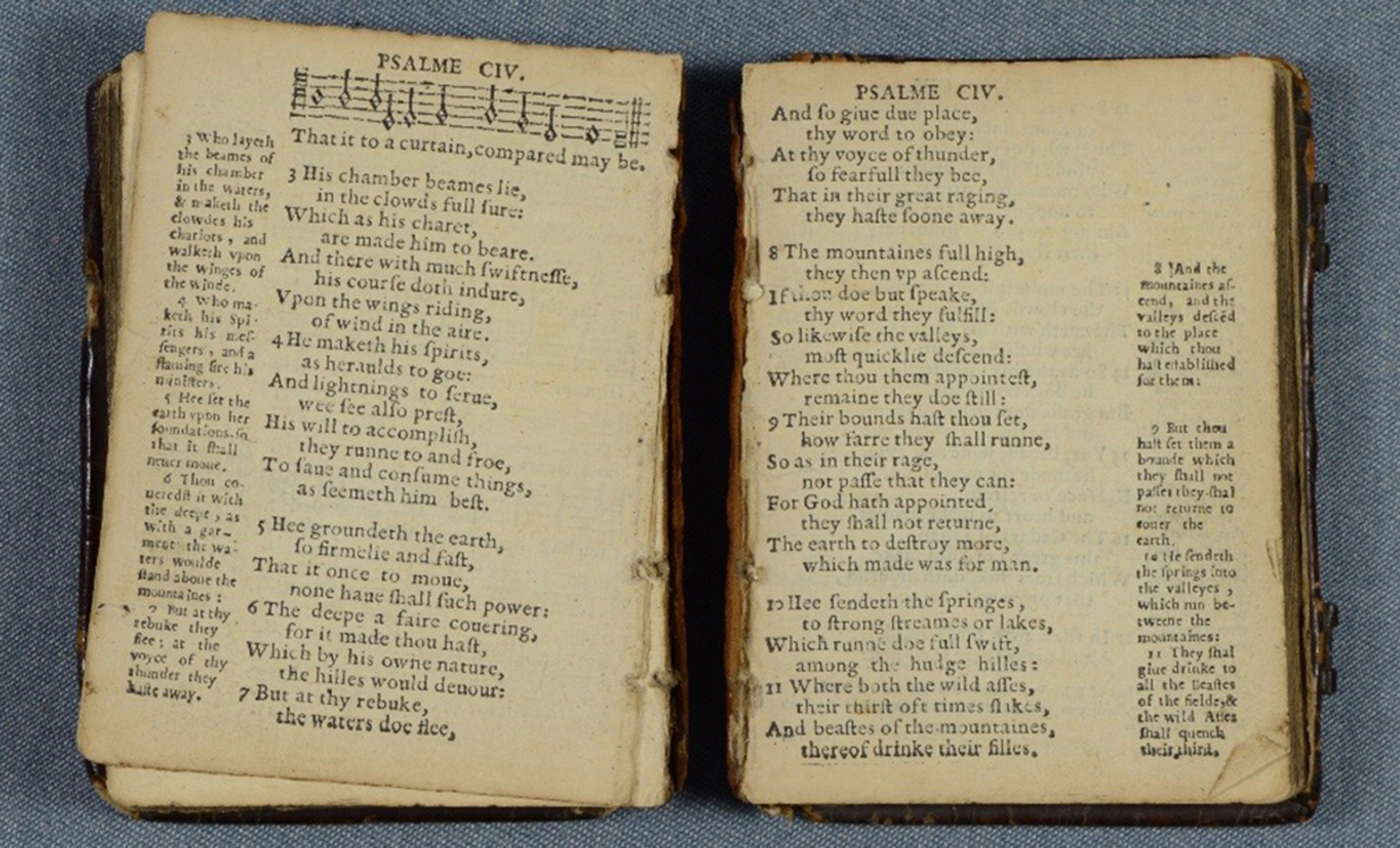
Regular use and the tight back binding style, where the covering material is glued directly to the spine, resulted in the volume splitting into two separate pieces. Sections on each piece of the split text block were loose and in danger of coming away completely and potentially becoming disassociated from the original volume. In this state, the options for the volume were to remain boxed on a shelf, unfit for production, or to have interventive conservation treatment to stabilise the binding, allowing it to be handled and used, albeit with care.
Private book conservator Emma Fraser ACR who is professionally accredited by the Institute of Conservation took on the project to save the volume. Her intention was to stabilise its physical condition, while retaining as much original material as possible so that no evidence of its original structure or use was lost.
The treatment – documentation, cleaning and consolidation
To record fully the condition before the treatment, the volume was photographed opened and closed from several angles and the binding structure and condition were recorded in a written report. Photography was repeated after the treatment was completed and all of the treatment steps were added to the written report.
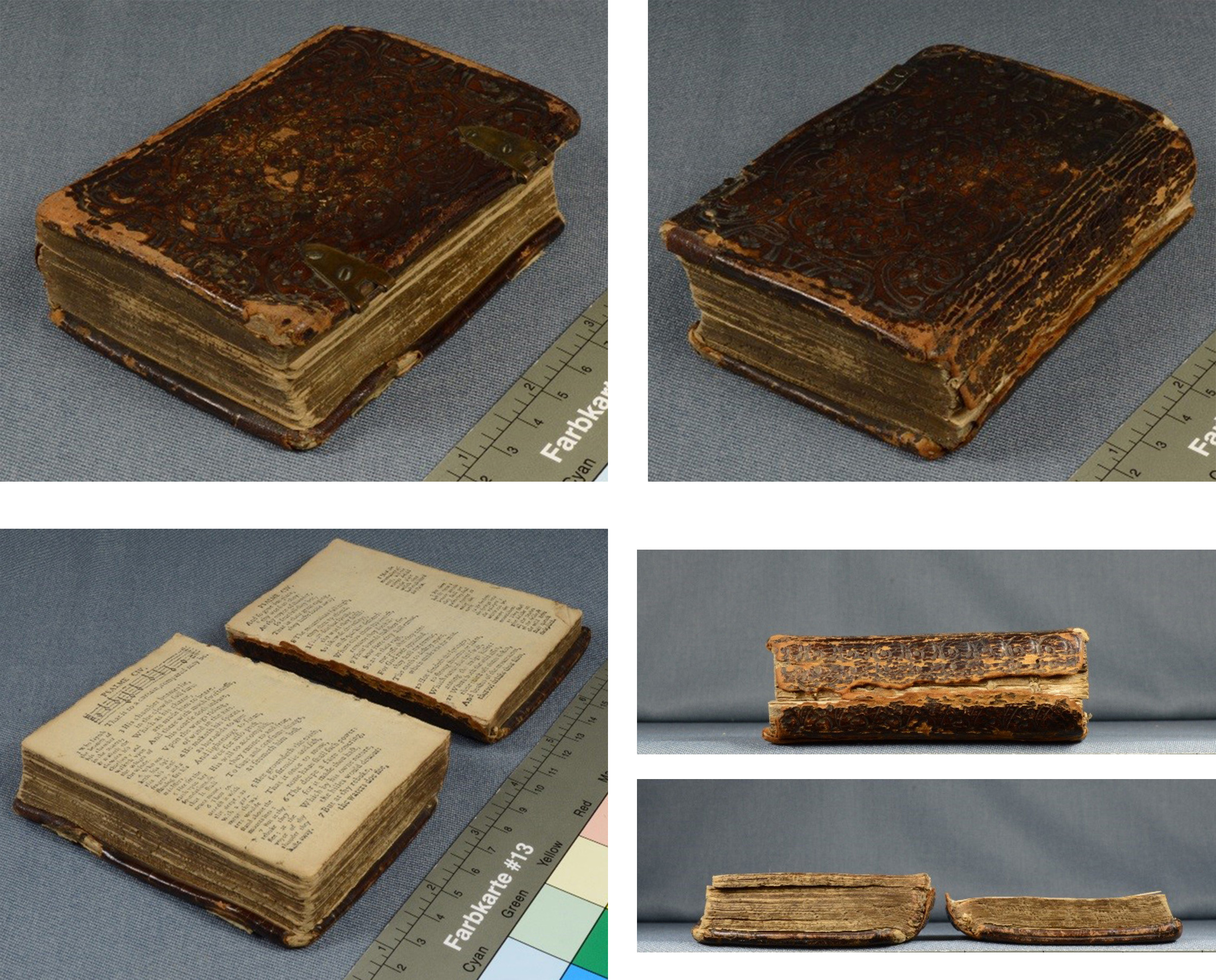
The Andro Hart Book of psalms before treatment
Book conservators are trained to keep detailed records of all the changes they make to volumes during treatments, including information about all the materials they use to clean the book and to repair it. This ensures that future scholars have a good understanding of the volume’s original format and the justification for the interventions; conservators assessing the item in the future will also have the necessary information about the materials and the techniques used to repair the volume which will aid their preservation decisions.
Next the binding was brushed and cleaned to remove accumulated surface dirt and debris. Removing dirt is an important treatment as surface dirt can be damaging to books: it can be chemically reactive and result in the weakening of the leather and paper and it is a food source for insects and mould, both of which will cause further damage. If allowed to absorb moisture, dirt particulates can be absorbed deeper into the paper and leather fibres and become permanently ingrained. For this reason cleaning treatments are normally one of the first treatment steps and are carried out before any processes using moisture, such as consolidation and repair.
To improve the leather’s strength and to allow subsequent repairs to hold, the leather was consolidated locally in worn and weakened areas – mainly along the board corners and edges and on the cracked and broken spine. The spine leather was lifted and the text block spine was cleaned of the old animal glue adhesive using a wheat starch paste poultice.
The volume was now ready for the repair to the sewing.
Understanding the sewing structure
Book conservators need to be aware of the construction of books not only so that their treatment is sympathetic and does not damage the original format, but also because the sewing structure and binding style affects the movement and opening of the volume. As well as being historic artefacts and carriers of information, books are also three dimensional objects which need to move and be used without breaking.
A basic supported sewing structure is formed by sewing through the center folds of sections onto cords or bands. The sewing thread runs along each section and circles around the cords at each hole. An alternative and quicker method of sewing a volume by hand is a recessed sewing where grooves are made into the spine of the gathered sections and a cord is recessed into each of those grooves. The sewing thread runs along the gathered sections and passes across the recessed cords instead of encircling them.
Prior to any of the treatments it was clear that the Book of Psalms was made up of multiple gatherings which were sewn onto recessed supports, and it was assumed that the sewing ran all along each section.
Joining the two halves
The two halves of the split text block needed to be sewn back together, but the original cords were broken so there was nothing to sew the sections onto to bridge the split. Emma’s solution was to lace new linen threads behind the original sewing on top of the original supports thereby creating new sewing supports. The sections either side of the split were then re-sewn onto the new supports.
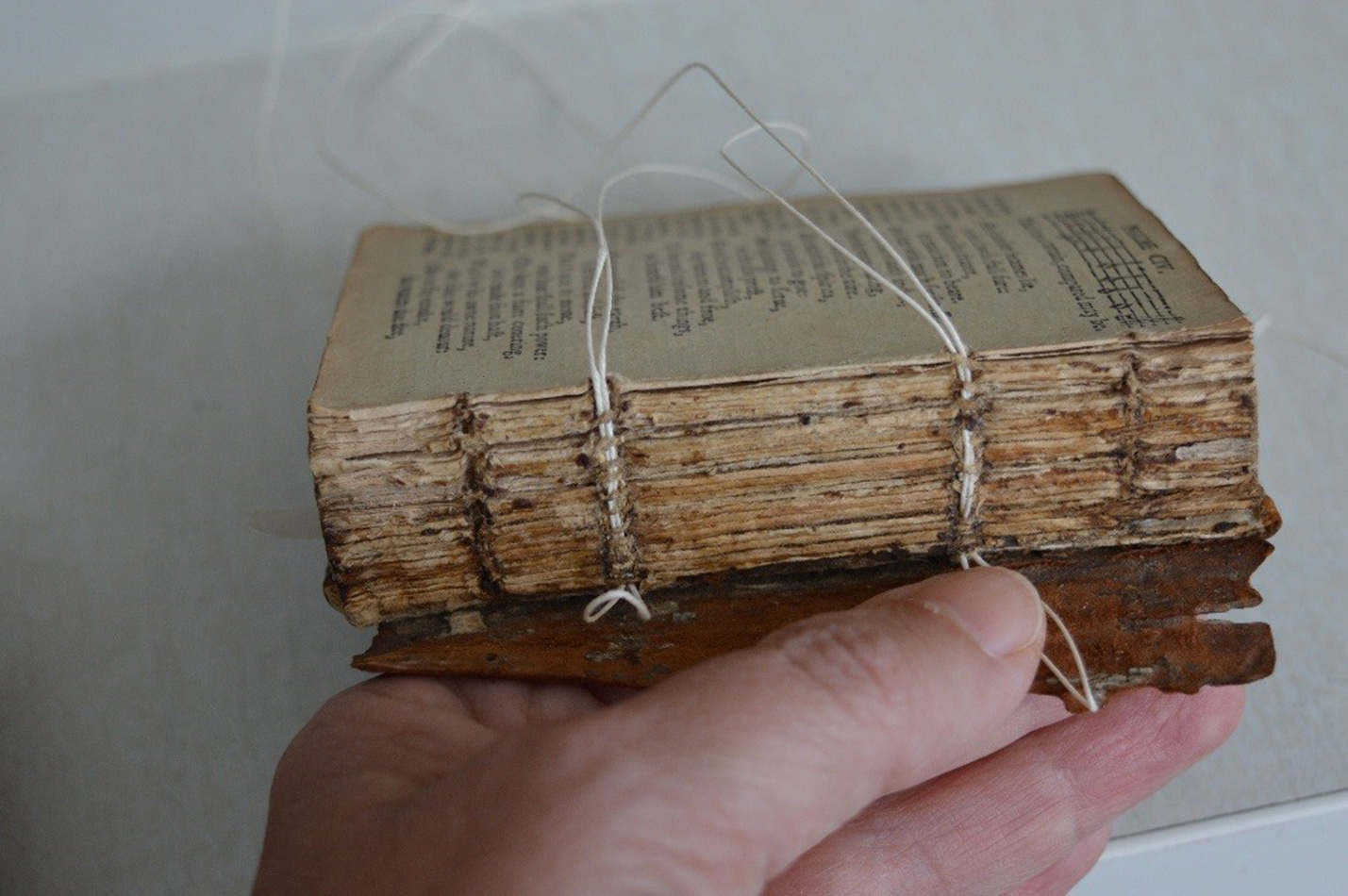
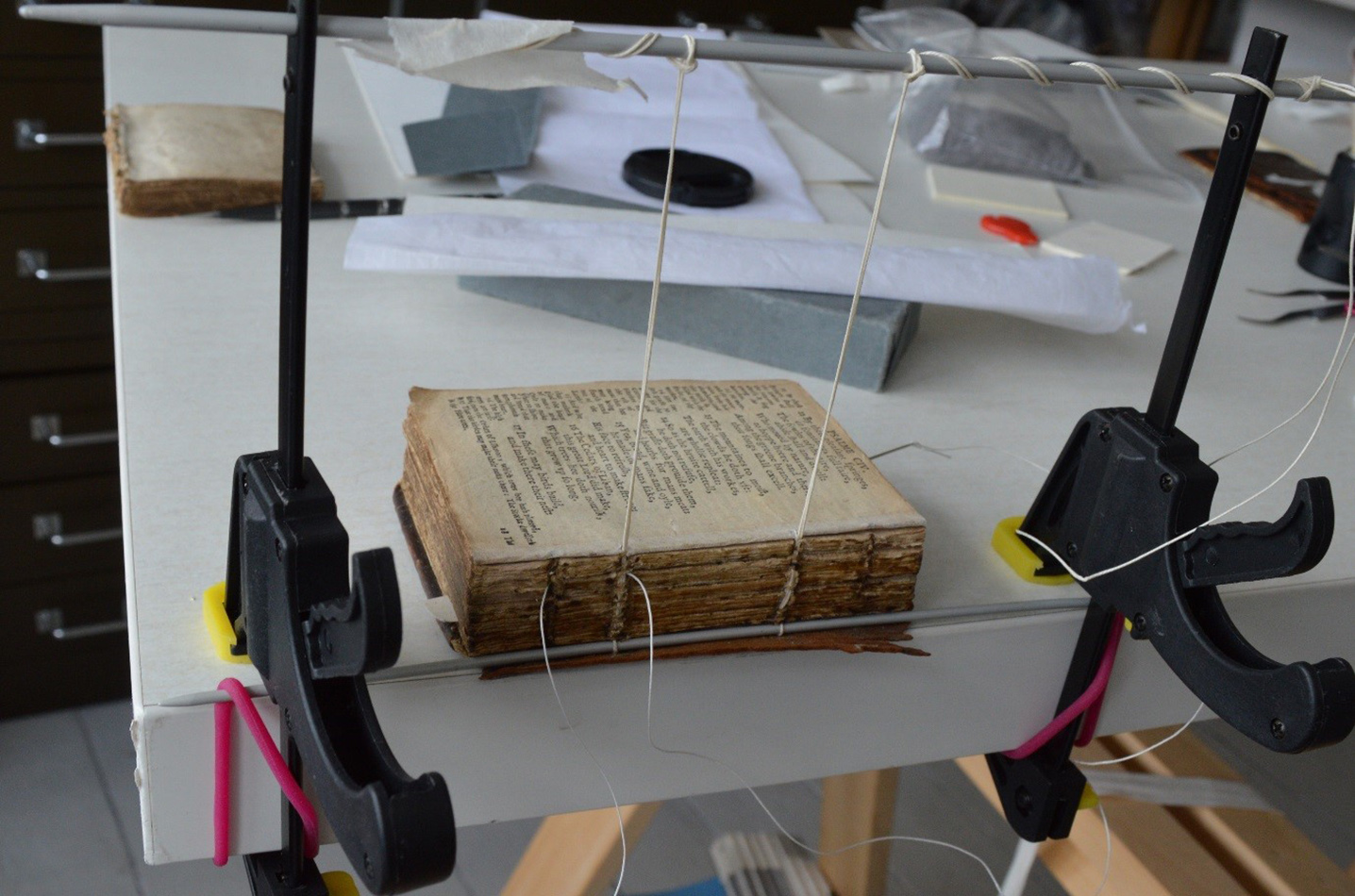
At this stage it was discovered that rather than running all the way through every section in an ‘all along’ formation, the original sewing was sewn ‘two up’. The ‘two up’ sewing structure was used to save time and to prevent swelling of the spine caused by the thread. Instead of the thread running through the entire length of each section and sewing one section at a time, here two sections are sewn at a time, the thread moving from one to the next as it progresses along the spine. Emma was able to use this discovery to her advantage for the treatment, as her new sewing followed the opposite pattern to the original sewing, ensuring that there was no doubling up of threads and consequent increased thickness of the spine.
The new thread sewing supports were used to reinforce the attachment of the text block to the front board. This follows the original board attachment and is stronger than using paper repairs alone.
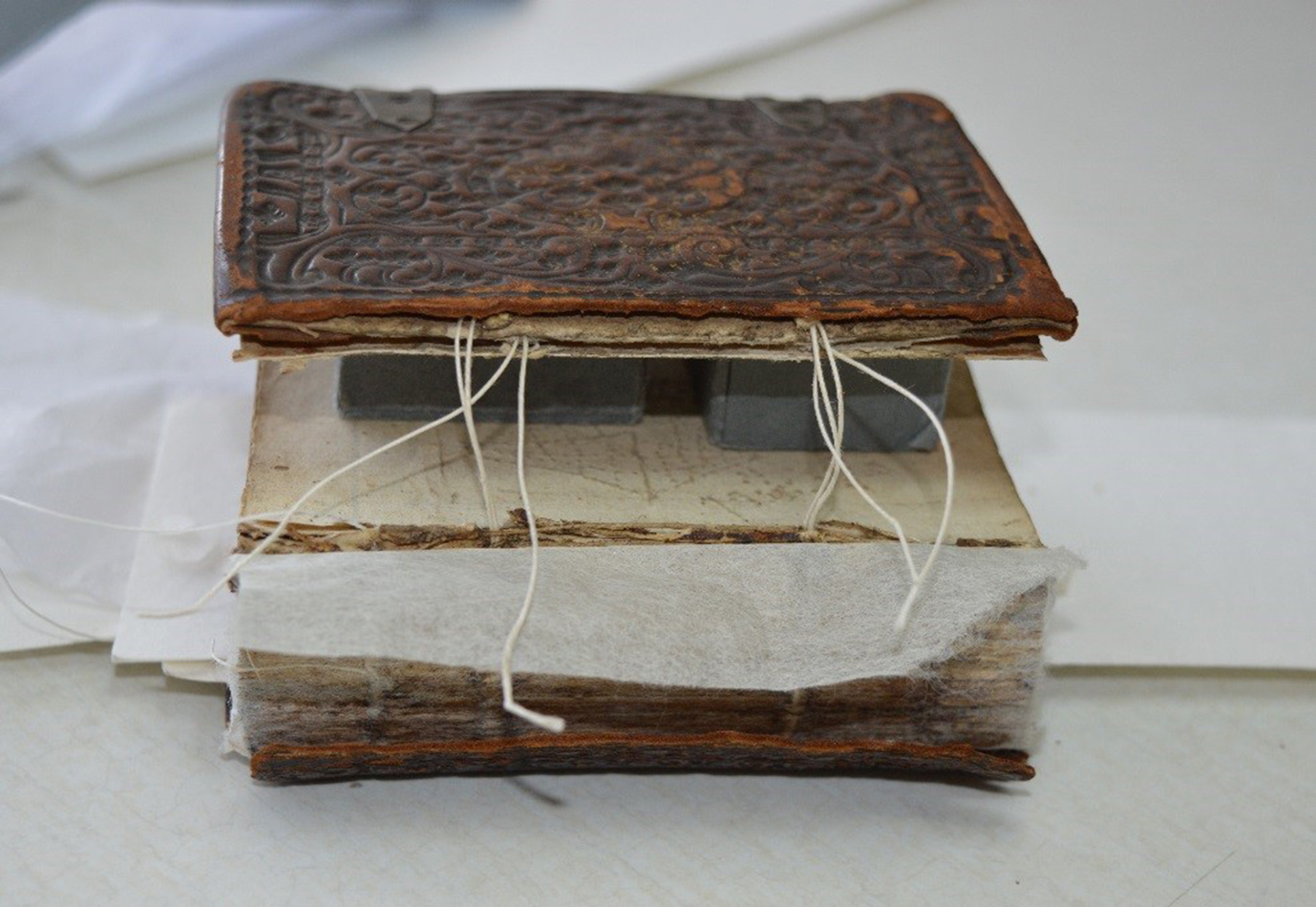
A new spine
The re-sewn spine was covered with Japanese kozo paper which is lightweight but very strong. A tube was made on the spine out of the Japanese kozo paper, a loose hollow of archival manila and adhered onto the Japanese paper hollow. The original spine leather covering material was then re-adhered over the manila spine. Losses from the leather spine covering were infilled and repaired with Japanese kozo which was toned with artists’ quality acrylic paints.
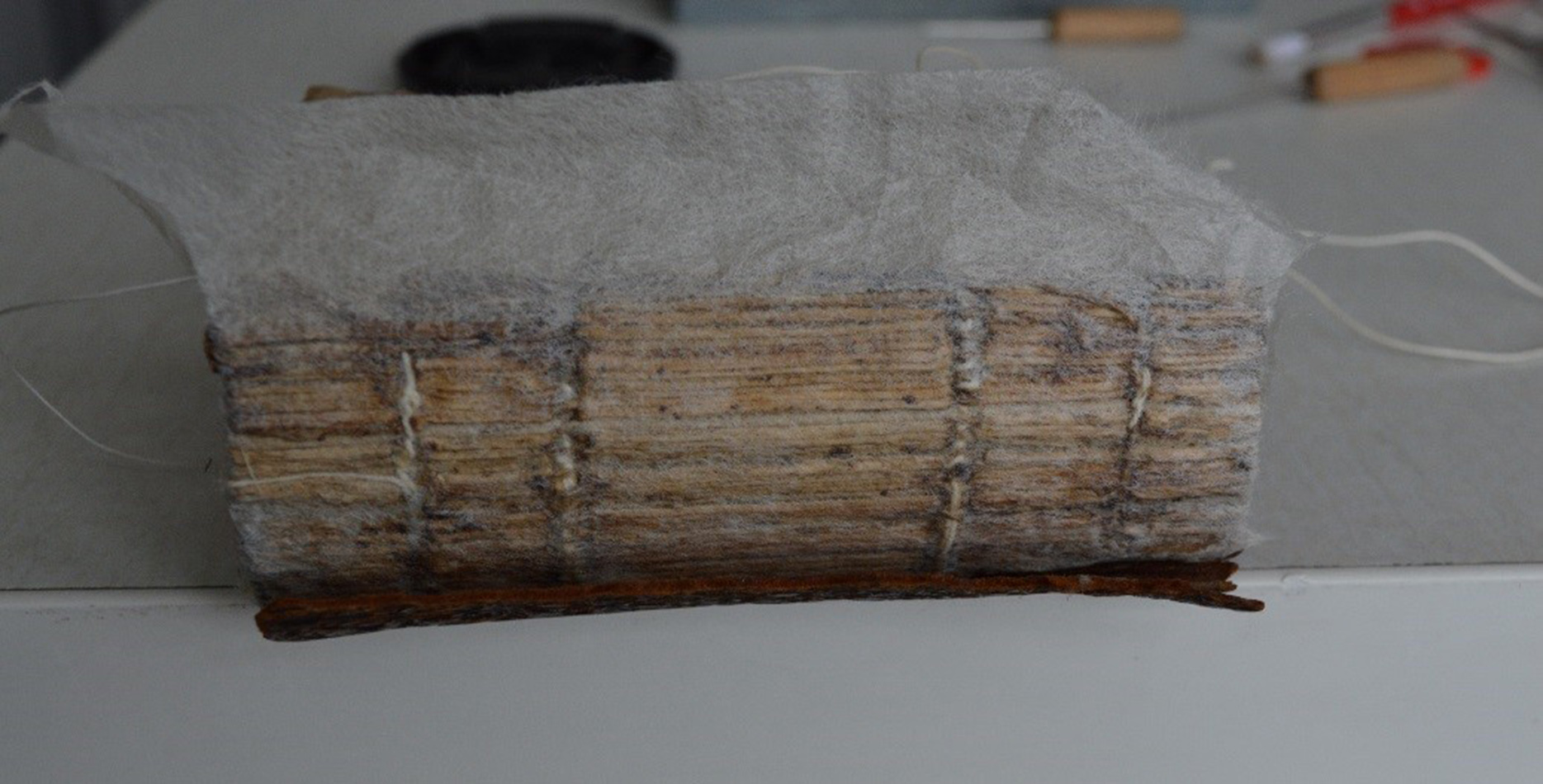
Now when the volume is opened and consulted, rather than the leather spine having to take on a convex shape with forced vertical creasing of the aged leather; the spine retains its shape and the tube hollow is opened. Apart from preserving the original spine, the tube hollow also has the advantage of pushing the opened text block up slightly and enabling a wider opening angle.
The conserved volume is now ready for consultation and use in teaching and our Special Collections holdings are enhanced by this treasured addition.
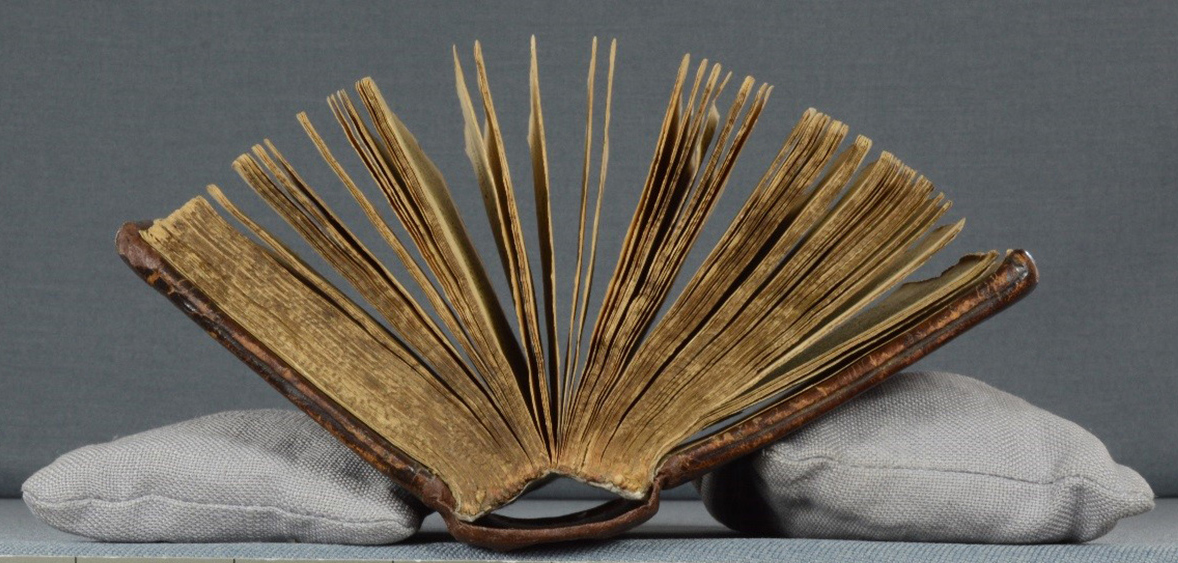

The donor, Roger Stewart, has published a blog post recording his very positive reactions to the conservation work done on the Booke of Psalmes. You can see it at https://random-treasure.com/2017/10/25/conservation/.
Erica Kotze ACR
Preventive Conservator
All images copyright Emma Fraser
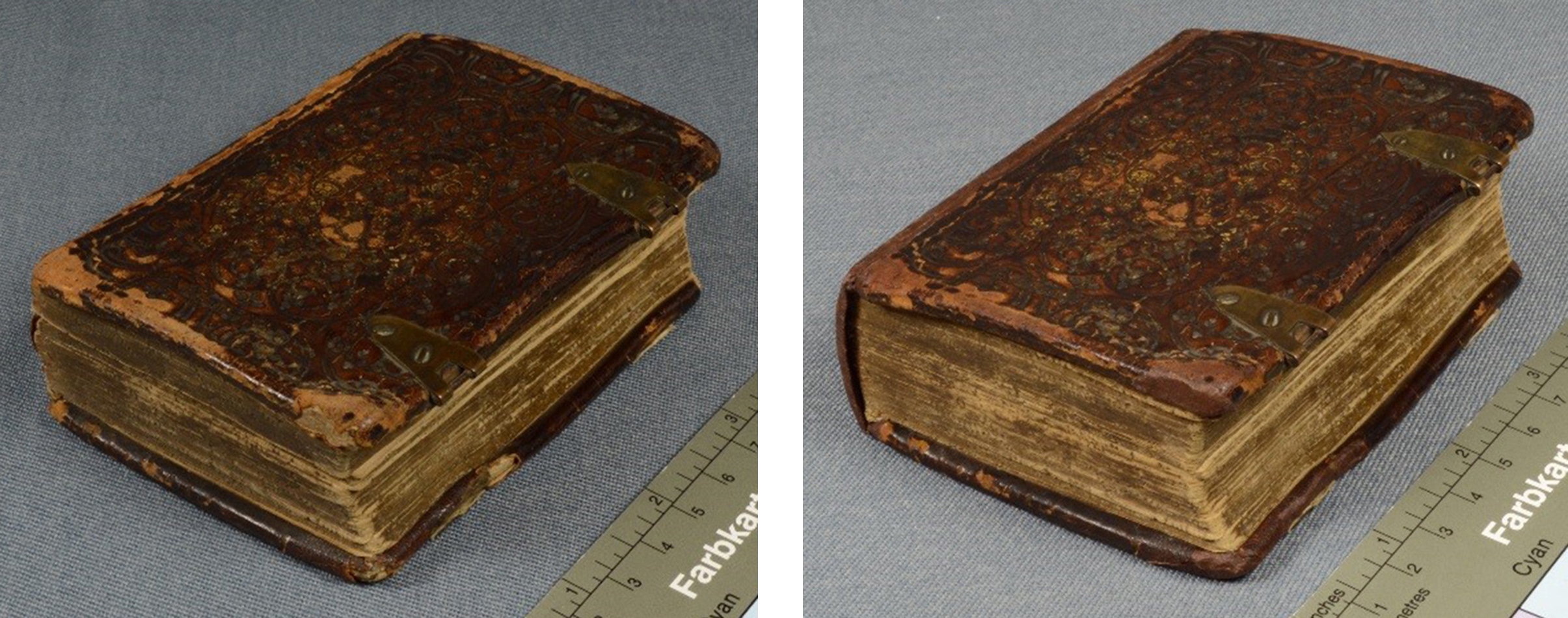

The hand skills of some women and men can just knock your socks off. Excellent work! Conservators rock. (Slowly and with infinite care and oodles of skill, but they definitely rock) Emma Fraser: knowledgeable and skilled.
Thanks Joe!
[…] Erica has written a fascinating piece about the conservation project on the St Andrews University Library “Echoes From The Vault” blog at https://standrewsrarebooks.wordpress.com/2017/11/30/a-trip-to-the-book-doctor-for-a-broken-spine/ […]
Very informative article being the paper conservator useful....